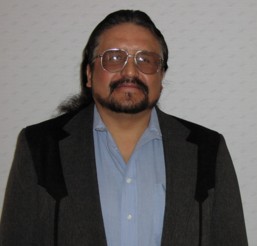
Spirit Lake Consulting, Inc.
Caring for Our People with Disabilities & Chronic Illness
"Making life better!"

Diversity among Native Americans: Don't Believe Everything You Read about Indian Education
Erich Longie
Spirit Lake Consulting, Inc. President
Don’t believe everything you read about Indian education, especially that Indians receive free education. The fact is, most Indians make major efforts to overcome low-income and other obstacles to attain higher education. They take out loans and attend school part-time so they can afford to make their dream of a college education a reality.
Indian schools are not necessarily as ineffective as they have been portrayed. Indian schools do not appear as good as state schools until you look at the challenges that Indian schools have to overcome. There is a lack of funding. It is hard to attract and retain good teachers because the schools are located in remote communities and salaries are lower than urban areas. Since many schools are small, the number of courses than can offer is limited. Due to both small size and the difficulty finding staff, Indian schools are far less likely to have staff with training in dealing with students with disabilities, especially students with low-incidence disabilities such as deafness or blindness.
Indians, unlike some other minorities, e.g., many immigrant groups, often do not want to be assimilated into the mainstream. This makes it difficult to educate them if the school staff see one purpose of education as making everyone conform to one cultural view.
Hopefully, most people realize that there is diversity among the various tribes and not everything written on American Indians applies to all tribes or even all members of one tribe. Like other cultures, Indian cultures, too, are changing and there are differences across generations and even among members of the same community. Lately, satellite TV has done more to drag our young people into the mainstream then any other device. As a result, our students may act traditional one day and modern the next.
For example, I reviewed an article on suggestions for teacher of American Indian youth. This article was published in 1989, 16 years ago. The research was done with Navajo, Pima and Yaqui Indians, all in the southwest. The authors said that Indians are less likely to ask questions if they don't understand something and are more likely to watch, be quiet and try to learn than announce their ignorance to the world. They say that children are more often expected to watch how something is done and try it when they think they can do a good job, not jump in and learn by trial and error.I would say the article would apply to the the Plains Tribes also, but to various, lesser degrees. One other factors teachers must consider is many of these "discoveries" about Indians' learning are often 10 - 20 years behind... meaning that this may true 20 years ago, but may not be 100% true today. For example, this article would definitely apply to my generation (in their fifties) but not so much to the generation that is in school today.
Another factor you would need to take into consideration is, where does the child live on the reservation? At Spirit Lake this article would be much more accurate regarding those children from Tokio and Crowhill districts, and not so accurate with regard to those children from Ft Totten and St. Michael's district.
I had heard there was actually a study done on reservation which categorized Indians according to how the far there lived from the BIA office. The Indians who lived within a ten-mile radius, adapted more easily to mainstream education than those who lived forty miles from the BIA offices.I have not been able to locate the study (if you find it, please email me the reference!)
If true, this study does suggest one reason some Indian families are more educated than others. Their families have had more experience with whites and are more able to fit into a school system which has been designed and administered by white people. Other Indian children enter school with little previous contact with white people. Their teacher may be the first white person with whom they have extended contact. With these children, and their families, cultural barriers to communication are going to be greater, of course. As we will discuss many times in these web pages, communication with families of children with disabilities is extremely important for providing good services and a good education.
Another factor causing diversity among Indians, is the Indians who are various degree of white. Having a white parent and light skin often made it easier for them to succeed because they were not subjected to the same stereotypes and prejudices in daily living as someone who ‘looked Indian’.
Motivation may differ greatly. You have those who so hated the poverty that they did everything they could to escape it. The variations among Indians are endless, even within the same reservations.
The U. S. government had enacted a policy where Native American children were taken away from their parents and placed in boarding schools ... "Cultural interaction and conflict are always subtle and complex but they are not always as one-sided as in the case of Indian and whites. As the Iroquois, the Shawnee, and the Arapaho would eventually all discover... the white threat to Indians came in many forms: smallpox, missionaries, Conestoga wagons, barbed wire, and smoking locomotives. In the end, it came in the form of school. (Adams, 1995, p. 5)."
Not all reservations are the same in terms of acculturation and/or assimilation. Let me give an example between Spirit Lake and Turtle mountain reservations. I have always said we are 30 -40 years behind Turtle Mountain in education, home ownership, private business, and interracial marriages, etc.
When I was visiting Turtle Mountain Community College, the Academic Vice-president, Carol, gave me a booklet that
chronicles her mom's life; her mom was born in 1921. Reading the booklet brought back vivid memories of my childhood- water freezing in the basin during winter, wind/snow coming through the walls in winter, the constant hunger, absolutely no money, and the simple happy times were also very similar. Now keep in mind that I was born in 1953, 31 years after Carol's mom was born, yet my childhood was very much like hers.
By the time Carol was born, they had a decent house and food on the table, at least according to our standards.
In the same way, my children, who are in high school and college now, had a completely different upbringing from mine. Like Carol, from Turtle Mountain, they have always had a warm house, plenty to eat and the latest clothes or shoes that everyone is wearing. I am satisfied with electric, running water and gas heat in the winter time. My boys will take it much further, they want carpeting, expensive furniture, Christmas decorations,
Just as their material goods were different growing, so was their experience in the white world, attending white schools for part of the time, and their attitudes and behavior are different, too.
So, my point is that, while these articles on American Indian children in schools might be true for the time or place for which these were written, teachers and others need to be careful not to apply this information to everyone. It may be that the student doesn’t look you in the eye because he or she has a traditional Indian upbringing. Or, it may be something completely different. Maybe the student is depressed or just doesn’t like you. That is not as easy an answer as “Indians don’t make eye contact”. The best advice I can offer is to keep an open mind and try to get to know all of your students as individuals. Then you will know what information about working with American Indian students applies to yours and what doesn’t.
![]() Next: Leadership, reservation style
Next: Leadership, reservation style